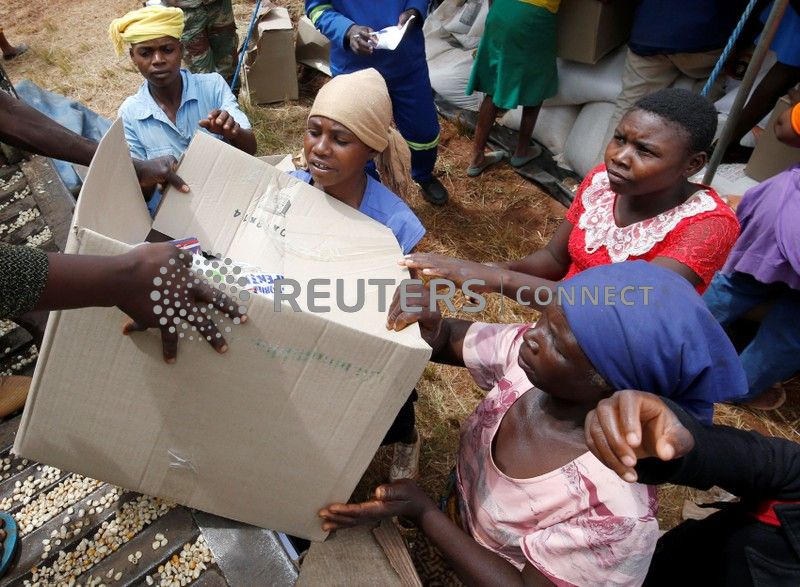JOHANNESBURG (Reuters) – The United Nations World Food Programme said on Thursday that a record 45 million people in the 16-nation Southern African Development Community faced growing hunger following repeated drought, widespread flooding and economic disarray.
Southern Africa is in the grips of a severe drought, as climate change wreaks havoc in impoverished countries already struggling to cope with extreme natural disasters, such as Cyclone Idai which devastated Mozambique, Zimbabwe and Malawi in 2019.
Zimbabwe, once the breadbasket of southern Africa, is experiencing its worst economic crisis in a decade, marked by soaring inflation and shortages of food, fuel, medicines and electricity.
“This hunger crisis is on a scale we’ve not seen before and the evidence shows it’s going to get worse,” the WFP’s Regional Director for Southern Africa, Lola Castro, said in a statement.
“The annual cyclone season has begun and we simply cannot afford a repeat of the devastation caused by last year’s unprecedented storms.”
The agency plans to provide “lean season” assistance to 8.3 million people grappling with “crisis” or “emergency” levels of hunger in eight of the hardest-hit countries, which include Zimbabwe, Zambia, Mozambique, Madagascar, Namibia, Lesotho, Eswatini and Malawi.
To date, WFP has secured just $205 million of the $489 million required for this assistance and has been forced to resort heavily to internal borrowing to ensure food reaches those in need, it said.
In December, the United Nations said it was procuring food assistance for 4.1 million Zimbabweans, a quarter of the population of a country where shortages are being exacerbated by runaway inflation and climate-induced drought.
“Zimbabwe is in the throes of its worst hunger emergency in a decade, with 7.7 million people – half the population – seriously food insecure,” the agency said.
In Zambia and drought-stricken Lesotho, 20% of the population faces a food crisis, as do 10% of Namibians.
Castro said that if the agency does not receive the necessary funding, it will have no choice but to assist fewer of those most in need and with less.




